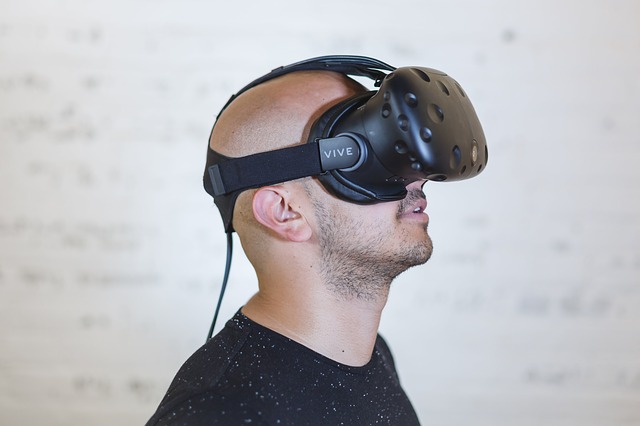
Technology brings us two great possibilities for interacting with reality: visiting a different place without actually going there or exploring new information in our environment. To use them, you need an application or even a specific device. Do you know how to differentiate and are prepared to apply each of them to your business?
Basically, the difference is: virtual reality tools like Oculus Go transports you to a different, 100% virtual, computer-created environment, using accessories like oculus rift, for example, or the like that block your view of the real world so that your immersion is more complete. Already in augmented reality you still see the real world, but with the projection of complementary content: it adds the possibility to explore more where you are, interacting with your smartphone.
We may confuse the application of each of these realities because both are related to virtual experiences that act in the way we perceive the world, but the interaction with each is different. Let’s check how each one is being used.
Traveling on the go: virtual reality
The focus of virtual reality is to replace the real world view with digital content – hence the virtual name. You can visit a virtual exhibition of a museum in another country, for example, from the sofa of your home.
Since you can’t see the real world at the same time (it only works with the mandatory use of glasses or a diving helmet), you can offer sensations of size, space and depth. The image generated by glasses or helmets is not static: it follows the movement that the user makes, walking or turning the body. In addition to visual stimuli, virtual reality experiences, like those provided by Synchronize VR, can include sounds, plus the use of headphones.
It can be used on:
Sales: A realtor can offer the customer a tour of a property that is miles away from the real estate agent. Without the route there, it saves time and can already offer a good idea of the property. And with Sync VR technology, you can give your viewers best experience possible.
Journalism: During the environmental disaster in the city of Mariana, some photographers recorded the scenes with 360º, so that the public could see the damage later with the help of virtual reality. Just as in this case, videos and photos can be used for viewers to follow a virtual reality broadcast by walking through the news scene, wherever they go.
Training: US soldiers, for example, do training exercises in simulated environments – many of them are immersed in virtual reality.
Games: Roller coaster simulations, motoring, and virtual reality extreme sports can provide the customer with the coolness in the belly that would come with the safety experience of a comfortable armchair. There are projects being developed for both Sync Oculus Go and the use of PlayStation VR.
Healthcare: Researchers at the University of Louisville have tested virtual reality in treating anxiety-related illnesses by exposing patients to their fears safely to rid them of phobias.
Tourism: Being able to be anywhere and travel at the same time to any other, tourists can visit museums, squares or watch shows anywhere in the world before taking the plane, which can help you decide where to go.
Medicine: Medical students are already being trained by performing surgeries in a virtual environment, so that they are safer at the time of the actual surgery.
Bringing Things to You: Augmented Reality
Already Augmented Reality, in turn, works by projecting new content (images, text, 3D objects) in the real view we have at the moment. It would be possible, for example, to view additional information about a particular work if you were actually visiting an exhibition in a museum.
To use it, you do not need to have a goggle or immersion helmet: with tablets or smartphones you can already experience overlapping digital components with the real environment. Specific devices also already fulfill this function, such as Hololens glasses or Google Glass.
Got the difference?


